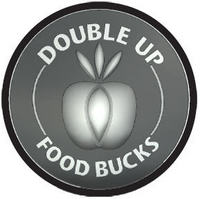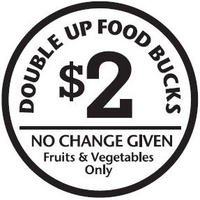Double up food bucks and food policy with the Fair Food Network

When I taught in Washington, D.C., a student came to school one day with marshmallows and Cheetos for lunch. Think about the dietary repercussions of such “food” - day in day out. Think about the $70 billion a year of your tax money spent on food stamps where 60 percent of that contributes to our pandemic of diabetes, high blood pressure and obesity - welcome to our health care.
Fair Food Network’s solution to this Gordian Knot is simple: encourage people to spend their food stamp benefits on local produce, chronicle the benefits and evidence scientifically, and change the policy in Washington, D.C. Their Double Up Food Bucks program matches every food stamp dollar spent at a farmer’s market, up to $20 per visit.
Hesterman speaks broadly and with conviction about the program. “Instead of watching our $70 billion of food assistance going to support the highly processed food industry while keeping our low-income families and kids unhealthy: eating high fat, highly processed, high sugar food. We need to use that same resource in a way that gets healthier food to people while also supporting a local food economy.”
From planting the first heirloom apple trees in the organic farm at UC Santa Cruz 35 years ago, to granting millions of dollars over nearly 20 years as part of the Kellogg Foundation’s Sustainable Food Systems Program, Hesterman has either worked with, or given seed money to, many of the organizations involved in the local food movement. Hesterman feels his lifetime of work has enabled him, “to gain a perspective as to how this movement has been growing from very early on and has provided me with an incredible network of people and projects all of the country … and a lot of good connections in the philanthropic world.”

The front of the aluminum token for Double Up Food Bucks.

The back of the Double Up Food Buck.
In addition to his leadership of the Fair Food Network, Hesterman is working on a book. “The book chronicles the movement and introduces a lot of the good food heroes. Some of these are small scale - but some of it is big company, too. You don’t hear about it commonly, but some of the largest food companies in the country are doing some very interesting work right now creating more ecologically sound systems and insisting that farmers that they source from produce their food differently.” The final part of the book focuses on the, “ways you can plug into this and help this revolution.”
The working title of the book is "Good Food Revolution," with the Double Up Food Bucks program as one front, I look forward to reading of more.
Corinna volunteers with the Westside Farmers Market and wrote a book about many things.


Comments
Vivienne Armentrout
Mon, Jul 12, 2010 : 10:44 a.m.
Great article, Corinna! A question though - how are the coins distributed? And I gather they can only be redeemed by farmers' market vendors who also accept Bridge cards? This ties into a couple of areas that I've followed with interest. One is, what are the barriers to having local growers who sell at farmers' markets able to receive money from the Bridge Card (aka food stamps) program? There are qualifications and procedures, I'm sure. At one time neither the Westside Market or the Ann Arbor Farmers's Market was geared up for that - or the related state program, Project Fresh http://www.projectfresh.msu.edu/. I believe that this is no longer the case? In any event, it would be apparent that some small vendors might have trouble accessing the program. Also, it appears that this program has the possibility of serving as a local currency (payable only for certain items). Think Local First http://www.thinklocalfirst.net/ had an interesting study going on of that. What would be needed would be a way for small vendors to receive the aluminum coinage and redeem them for goods and services. Individuals and foundations could contribute money (US currency) to subsidize making the coins available to those in need.